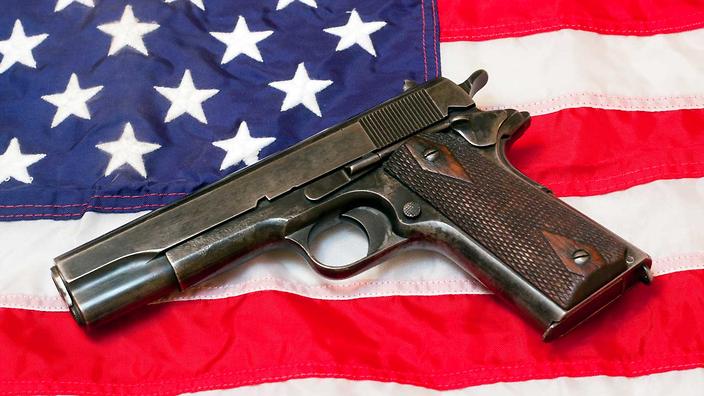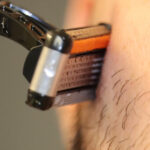Firearms From American Traders
The first explorers brought firearms to America, and they quickly fell into the hands of the Indians. In the mid-17th century, Indian commercial weapons were the most traded weapons in North America. The widespread use of these weapons led to many names: the French called them fusils (fusees or fukes), weapon manufacturers in England called them “Carolina Muskets,” and traders and discoverers, including General William H. Ashley, called them “fusils” in London. For all practical purposes, the Indian trade artillery arose with introducing the stone castle between 1620 and 1635. The early Dutch and English plain drilling cannons created the pattern for the Northwest trade cannons. The outdoor trader is an online platform to sell or buy the used guns online and also it has discussion forum.
Settlers, trappers, and hunters recognized the versatility of commercial weapons as developed by Native Americans. The trade in firearms was based on firearms sold or traded by indigenous peoples in a particular geographical area to fur and agricultural companies. These rifles were light, small-caliber bullets, in contrast to the military weapons of the time, which were suitable for long hunting periods throughout the country.
There were large and small holes with an average of 0.62 caliber and 20 caliber. Compared to military muskets and other .69 and .75 caliber shoulder arms, the smaller bore sizes required less lead bullet powder per shot. That made shooting more economical. This versatility was another reason why hunters preferred rifles. Among the nomadic tribes of the Northern Plains, especially the horsemen, the preferred rifles had short barrels of 30 to 48 inches in length, making them ideal early weapons that were easy to carry and maintain.
Fort Union
In the inventory of Fort Union, the Northern Plains Indians who traded with Fort Union demanded English-made weapons from the Northwest, and these were considered the best weapons available. s name and trademark: Barnett Tombstone Fox, stamped striking plate, brass side plate with sea snake and right fous (13772). AMFCO imported and sold English versions manufactured in Belgium and the United States. These weapons had fake English markings.
Congress passed the NFA in 1934 to address the existential threat posed by the unfettered trade in military-grade firearms that fuel vicious gang warfare. The $200 transfer tax on such firearms was prohibitive in 1934. Congress was determined to regulate the sale of machine guns, short guns, rifles, silencers, and other weapons used by members of criminal organizations.
The gun industry noted that the NFA and Dodge had created a functional equivalent to short arms that would not be subject to increased regulation and transfer taxes: gun owners. Gun carriers were the most common firearm accessory manufactured in 2013 by manufacturers who said they wanted to help wounded and disabled veterans shoot AR-style guns more easily by allowing the user to rely on one hand to control and stabilize the firearm while using the clasp without having to use both hands.
According To OIG Report
The OIG report found that between 2004 and 2011, 17,4679 firearms were missing from its inventory. The FFL monitors to ensure firearms are not stolen or traded. Missing firearms pose a serious risk to public safety as they can fall into criminal hands and cannot be traced back to the original purchaser.
Thompson submachine gun
The lightweight Thompson submachine gun, also known as “Tommy Gun,” was developed for late use during the First World War, when its inventor John Thompson marketed it to law enforcement through his company. A generation later, during the US conflicts with Nicaragua and Honduras and with the advent of 1918, the Thompson offered a hand-held version of the deadly machine gun and was one of the first portable automatic firearms.
AK-47 rifle
Perhaps the most significant invention of the Cold War, the AK-47 rifle developed by Mikhail Kalashnikov for the Soviet military in 1947, stands for “automatic” (Kalashnikov). It offered a rapid-fire rifle with low weight and portability. The deadly effectiveness of AK during the Vietnam War prompted the armed forces and the Pentagon to produce a new US assault rifle, the AR-15, which later became known as the M-16.
German gunsmiths
The long rifle was the product of German gunsmiths who migrated to the new settlements in southeastern Pennsylvania, Virginia and other areas at the beginning of the 17th and early 18th centuries, recreating the earlier Jagerrifles (Anglicized as Jaeger) used for hunting in Germany in the 17th and early 18th centuries. The weapons of choice at the border were smooth muskets exchanged for weapons from factories in England and France and shipped to the colonies for purchase. The rifles were manufactured from hand to hand and operated by tools at a limit.
Twenty-six states and the District of Columbia have passed laws regulating gun dealers, and other states require dealers to conduct background checks, keep records of sales and report sales to law enforcement. See our summary of background check procedures and kept records of gun sales in those states.
Oversight of arms dealers is crucial, as arms dealers are an important source of trade in firearms. A report by the Bureau of Alcohol, Tobacco, Firearms and Explosives (ATF) analyzed 1,530 gun trafficking investigations conducted between July 1996 and December 1998 and found that dealers and pawnbrokers were associated with nearly 40,000 firearms. The ATF traced nearly 70% of firearms seized by law enforcement in Mexico between 2007 and 2011 to originate in the United States.
The long rifle characteristic is that the long barrel was adapted to the New World by German gunsmiths with a migration background. They knew German rifles with barrels over 30 “and large caliber rifles that used large quantities of lead.
A rule of thumb of the gunsmith was to make the rifle no longer than the height of the customer’s chin, since one had to see the mouth of the load. Longer barrels gave the black powder more time to burn and increased muzzle speed and accuracy. They also allowed for a finer sighting.
The weapon was gas-powered, which means that part of the high-pressure gas in the cartridge was used to extract the spent cartridge and insert a fresh one into the armoury. The weapon could fire up to 900 rounds per minute.










